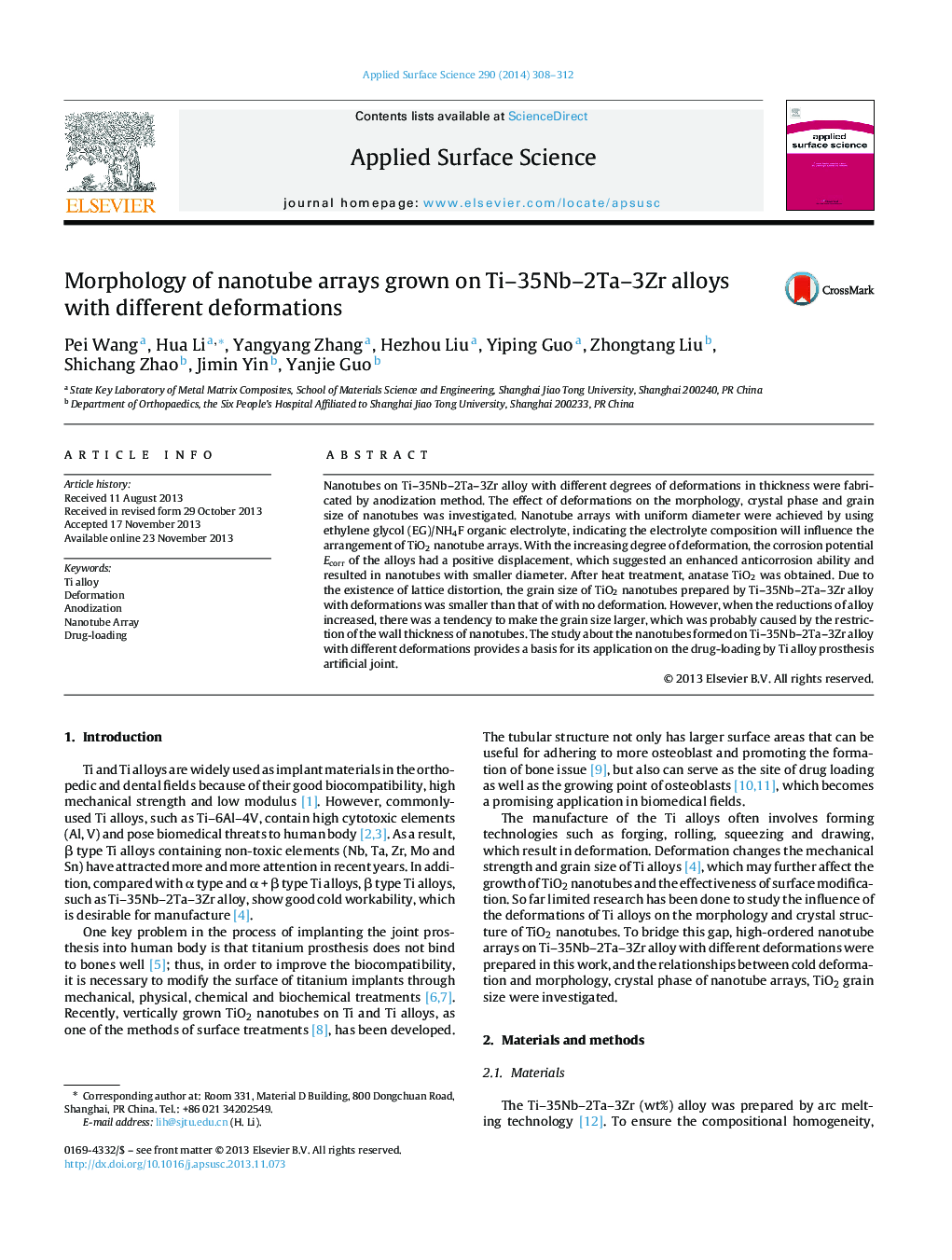| Article ID | Journal | Published Year | Pages | File Type |
|---|---|---|---|---|
| 5359919 | Applied Surface Science | 2014 | 5 Pages |
Abstract
Nanotubes on Ti-35Nb-2Ta-3Zr alloy with different degrees of deformations in thickness were fabricated by anodization method. The effect of deformations on the morphology, crystal phase and grain size of nanotubes was investigated. Nanotube arrays with uniform diameter were achieved by using ethylene glycol (EG)/NH4F organic electrolyte, indicating the electrolyte composition will influence the arrangement of TiO2 nanotube arrays. With the increasing degree of deformation, the corrosion potential Ecorr of the alloys had a positive displacement, which suggested an enhanced anticorrosion ability and resulted in nanotubes with smaller diameter. After heat treatment, anatase TiO2 was obtained. Due to the existence of lattice distortion, the grain size of TiO2 nanotubes prepared by Ti-35Nb-2Ta-3Zr alloy with deformations was smaller than that of with no deformation. However, when the reductions of alloy increased, there was a tendency to make the grain size larger, which was probably caused by the restriction of the wall thickness of nanotubes. The study about the nanotubes formed on Ti-35Nb-2Ta-3Zr alloy with different deformations provides a basis for its application on the drug-loading by Ti alloy prosthesis artificial joint.
Related Topics
Physical Sciences and Engineering
Chemistry
Physical and Theoretical Chemistry
Authors
Pei Wang, Hua Li, Yangyang Zhang, Hezhou Liu, Yiping Guo, Zhongtang Liu, Shichang Zhao, Jimin Yin, Yanjie Guo,
